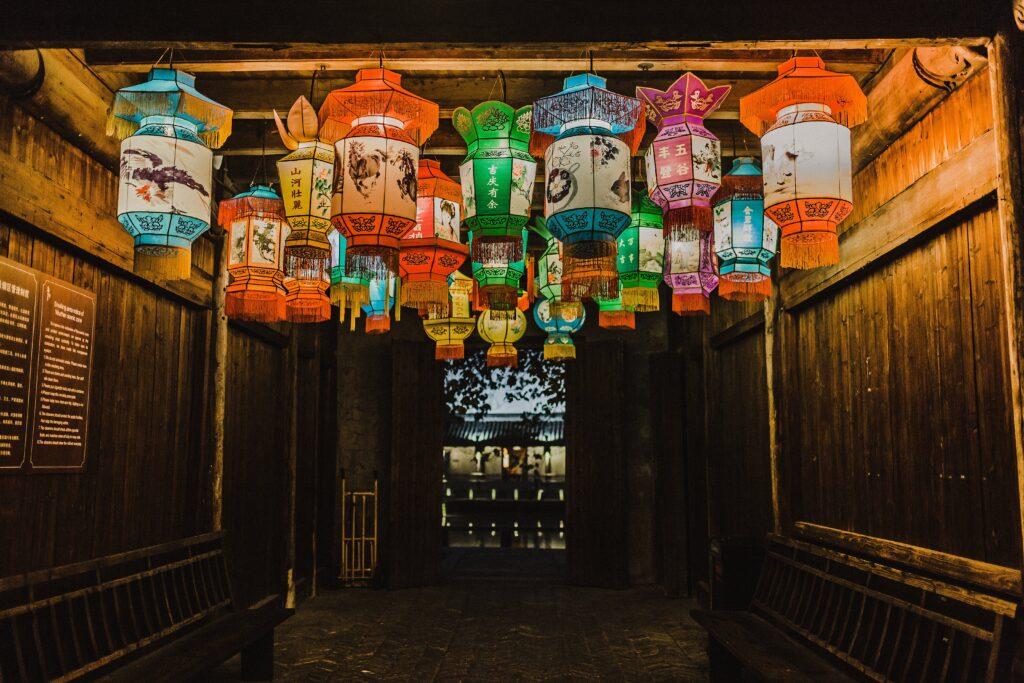Exploring the Magnificent Terracotta Army in Xi’an, China 🏛️🇨🇳
Unveiling the Ancient Guardians of China's History

Introduction
Nestled in the heart of China, Xi’an stands as a living testament to the nation’s rich history and cultural heritage. Among its many treasures, the Terracotta Army emerges as an unparalleled wonder, captivating the imagination of all who venture to explore its mysteries. This army, a silent testament to the ambitions of China’s first emperor, Qin Shi Huang, has stood the test of time, drawing visitors from around the globe to witness its awe-inspiring presence. In this article, we embark on a journey through the historical marvels of the Terracotta Army, unraveling the secrets of its creation and the profound impact it has had on China’s cultural landscape.
Historical Context of the Terracotta Army
The Terracotta Army, a remarkable archaeological find, dates back to the Qin Dynasty in ancient China. Discovered in 1974 near Xi’an, this vast collection of life-sized clay soldiers, horses, and chariots has fascinated historians and archeologists alike. The army was created to accompany China’s first emperor, Qin Shi Huang, in the afterlife. This archaeological wonder provides a unique glimpse into the beliefs and practices of ancient Chinese civilization during the third century BCE.
Discovery and Archaeological Significance
The accidental discovery of the Terracotta Army occurred when local farmers unearthed fragments of the clay soldiers while digging a well. Subsequent excavations revealed an astonishing array of meticulously crafted statues, each with distinct facial features and intricate details. The discovery marked a watershed moment in archaeology, shedding light on the sophistication of Qin Dynasty craftsmanship and the scale of imperial burial practices. The Terracotta Army has since become a symbol of China’s rich cultural heritage, drawing visitors from around the globe to marvel at its historical significance.
Emperor Qin Shi Huang and the Purpose of the Army
Emperor Qin Shi Huang, known for unifying China and initiating the construction of the Great Wall, ordered the creation of the Terracotta Army as part of his elaborate mausoleum complex. Believing in an afterlife that mirrored the earthly realm, he sought to ensure his continued rule and protection in death. The army was designed to guard the emperor’s tomb, a belief rooted in Chinese funeral practices where the deceased would be accompanied by items necessary for an ideal afterlife. The Terracotta Army, with its thousands of soldiers and horses, stands as a testament to the emperor’s quest for immortality and eternal protection.
The Construction Process and Artistic Detail
Crafting the Terracotta Army was an intricate process that involved skilled artisans and laborers. Each soldier was individually sculpted, showcasing a level of detail that reflects the craftsmanship of the Qin Dynasty. The clay soldiers were molded, fired, and painted with vibrant colors, creating a lifelike representation of a diverse army. The sheer scale of the undertaking, involving thousands of unique statues, highlights the organizational prowess of the Qin Dynasty and the significance placed on the afterlife in ancient Chinese culture. Today, the Terracotta Army not only serves as an archaeological marvel but also as a testament to the artistic and technological achievements of ancient China.
The Three Pits: A Walkthrough
Delving into the mysteries of the Terracotta Army requires a journey through the three meticulously organized pits that form this archaeological marvel. Each pit offers a unique perspective on the grandeur and purpose of Emperor Qin Shi Huang’s afterlife army.
Pit 1: The Main Army
Pit 1 stands as the primary showcase of the Terracotta Army, revealing the sheer magnitude of the emperor’s vision. This vast chamber is home to thousands of infantry soldiers, archers, and charioteers arranged in precise military formation. The soldiers vary in rank and role, reflecting the hierarchical structure of the Qin Dynasty’s military. The immersive experience of walking amidst these life-sized clay warriors provides a profound sense of the scale and artistry involved in creating this awe-inspiring testament to ancient Chinese craftsmanship.
Pit 2: Infantry and Cavalry
Pit 2 complements the spectacle of Pit 1 with a focus on the diverse infantry and cavalry units. Here, visitors can observe intricately detailed cavalrymen mounted on terracotta horses, showcasing the military might of the Qin Dynasty. The infantry units, armed with weapons ranging from swords to crossbows, stand in formation, offering a glimpse into the strategic planning and precision that went into the creation of the Terracotta Army. The lifelike expressions on the faces of the soldiers further enhance the immersive experience, transporting visitors back in time to an era of imperial splendor.
Pit 3: Command Center
The final pit, Pit 3, serves as the command center of the Terracotta Army. This smaller yet equally significant chamber houses high-ranking officers and generals overseeing the army. The figurines in this pit are distinguished by their elaborate armor, intricate headdresses, and commanding poses. The attention to detail in Pit 3 provides valuable insights into the military hierarchy and leadership structure of the Qin Dynasty. As visitors explore this command center, they gain a deeper understanding of the emperor’s meticulous planning for his journey into the afterlife, complete with a well-organized and disciplined army to ensure his eternal protection.
Navigating through these three pits offers a comprehensive and captivating glimpse into the historical, military, and artistic facets of the Terracotta Army, making it a must-visit destination for those seeking to unravel the secrets of ancient China.
The Emperor’s Mausoleum
Visitor Experience
Embarking on a journey to witness the awe-inspiring Terracotta Army in Xi’an promises a captivating visitor experience. The site, steeped in history and cultural significance, offers a unique glimpse into ancient China’s imperial legacy. To maximize your visit, consider these travel tips that ensure a seamless exploration of this archaeological wonder.
Travel Tips for Visiting Xi’an
Xi’an, with its rich historical heritage, provides a captivating backdrop for your Terracotta Army adventure. Plan your visit during the shoulder seasons of spring (March to May) or autumn (September to November) to avoid extreme weather conditions. Ensure you have comfortable walking shoes, as exploring the extensive museum complex involves covering significant ground. Engage with local cuisine at Xi’an’s renowned Muslim Quarter, savoring the unique flavors that complement your cultural immersion. Additionally, familiarize yourself with local customs and etiquette to enhance your overall travel experience.
The Terracotta Army Museum: Facilities and Amenities
The Terracotta Army Museum caters to the needs of its diverse visitors, offering modern facilities and amenities. The museum provides comprehensive information through signage and exhibits, enhancing your understanding of the historical context surrounding the Terracotta Army. Rest areas and cafes are strategically placed, allowing visitors to recharge during their exploration. Wheelchair accessibility ensures an inclusive experience for all. The museum’s commitment to visitor comfort makes it an accessible and enjoyable destination for individuals and families alike.
Guided Tours and Educational Programs
To elevate your understanding of the Terracotta Army, consider participating in guided tours and educational programs offered at the museum. Knowledgeable guides provide in-depth insights into the history, construction, and significance of the army, enriching your visit with a deeper appreciation for the site. Educational programs cater to various age groups, making the experience engaging for both adults and children. These initiatives transform your visit from a mere sightseeing excursion into a dynamic and immersive educational adventure, allowing you to connect more intimately with the cultural heritage on display.
A trip to the Terracotta Army in Xi’an goes beyond viewing ancient statues; it’s a holistic experience that blends history, culture, and education. By incorporating these travel tips and taking advantage of the museum’s amenities and programs, you ensure a memorable and enriching exploration of one of China’s most iconic archaeological wonders.





Facebook Comments